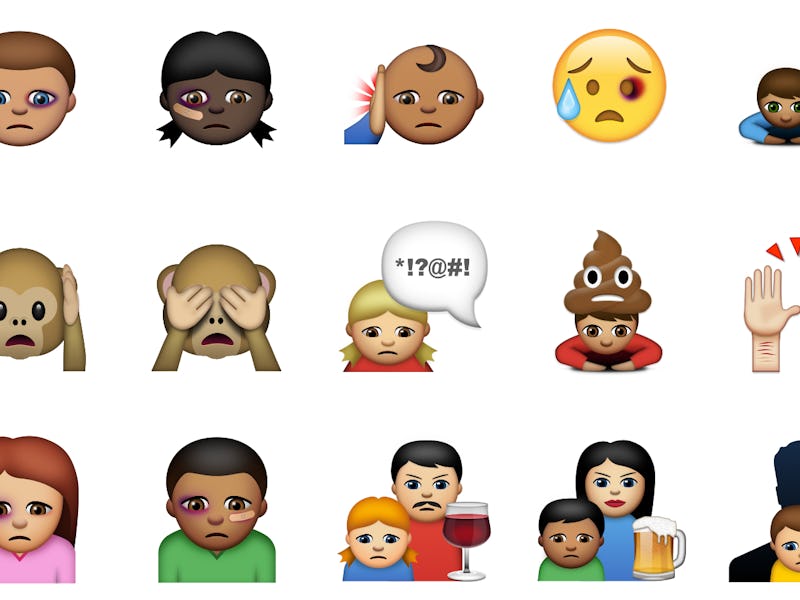How Emojis Could Expand Communication for the Better
The ubiquitous little pictographs shouldn't just be for sending to your friends anymore.

Emojis aren’t just smiley-winky faces for teenage girls to constantly send back and forth to each other anymore. These days literally anyone can send smiley-winky faces back and forth. And you can also use them to order pizza. Or maybe these tiny, transmittable cartoons can be put toward some legitimate good.
A Swedish non-profit called BRIS that runs a national helpline for abused children and teenagers has created Abused Emojis, a set of pictographs to help hurt or abused kids share their feelings. It’s a great idea, and transports the concept of emojis from innocuous text-based kitsch to a genuinely helpful branch of communication.
Maybe these other groups can use emojis to their benefit:
Kids with autism
An artist named Genevieve Belleveau mimicked psychologist Paul Ekman’s work on microexpressions, which is already used in autism therapy, by creating a standard emoji spectrum. The hope is that children suffering from autism can use them to communicate when words just won’t work.
Introverts
Emojis for when you really, really don't feel like explaining yourself in words. The Introji system is a crowdsourced series of emojis for an app that will let the indoor kids speak in the most indoor voice possible.
Travelers
Tourism boards need to get on this one. New cities/countries/protectorates/demilitarized zones can be confusing to visitors — even intimidating! Custom emojis for communicating in foreign places, with symbols unique to specific locales could be a helpful shortcut when no one speaks the same language.
Animals
Higher primates like Koko the gorilla have been communicating with sign language for decades, and parrots have developed healthy vocabularies. Maybe they could also also pick up on using emojis? Could cats pick them up? Could dogs? Elephants? Crows? Raccoons? Semiotics meets zoology. It could happen.